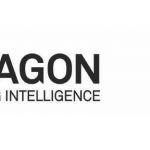Swedish technology group Hexagon AB, which acquired Leica Geosystems in 2005, launched its tender offer to acquire all the issued and outstanding common shares of NovAtel Inc., a Calgary, Alberta, Canada–based developer and manufacturer of OEM GNSS and related products, at a price per share of US$50 cash.
Swedish technology group Hexagon AB, which acquired Leica Geosystems in 2005, launched its tender offer to acquire all the issued and outstanding common shares of NovAtel Inc., a Calgary, Alberta, Canada–based developer and manufacturer of OEM GNSS and related products, at a price per share of US$50 cash.
Acting through its wholly owned subsidiary, Hexagon Canada Acquisition Inc., the Swedish technology company will keep its offer, which it launched October 19, open through November 27.
NovAtel’s board of directors has approved Hexagon’s bid to pay US$50 per share for all of NovAtel’s outstanding stock — or an aggregate purchase price of roughly US$390 million over and above NovAtel’s net cash balance. After the acquisition, NovAtel’s market capitalization would be $447 million with Hexagon holding 16.6 percent of NovAtel’s shares.
The offer represents a premium of about 31 percent above NovAtel’s 30-day volume weighted average price of $38.28 per share as of October 5. Hexagon expects the deal to close by the end of this year. If it does, NovAtel will operate as a wholly owned subsidiary of Hexagon.
Hexagon’s courtship of NovAtel, which began in earnest only about two weeks before the announcement, represents a remarkable achievement for the company and its president and CEO Jon Ladd, a veteran of the GNSS industry, as well as a team of senior managers who have been in place for even longer. These include Pat Fenton, vice-president and chief technology officer (CTO); Tony Murfin, vice-president for business development, and Graham Purves, vice-president of sales and marketing.
About five and a half years ago when Ladd joined the company from Magellan Corporation, NovAtel had recently closed out the books on its 2001 fiscal year. The company reported revenues of CDN$28.2 million (US$17.8 million), with net earned income of CDN$110,000 (US$69,000) for the full year. NovAtel stock was selling for about $2 per share.
“We didn’t get much respect back then,” Ladd told Inside GNSS. “We succeeded by keeping the faith, staying focused, and by not taking on anything outside our strategic plan.”
In 2006 NovAtel recorded sales of CDN$77.6 million (US$78.6 million) and net income of CDN$21.5 million (US$21.8 million). The company’s cumulative annual growth rate (CAGR) in 2002-2006 revenues has been 24 percent, and 95 percent CAGR in earnings.
Ladd acknowledges his good fortune at arriving at the company nine days before the completion of a “strategic cooperation agreement” with Leica Geosystems, which relinquished its own GNSS receiver development in favor of NovAtel’s technology. Sales to Leica, which has NovAtel OEM products incorporated into seven or eight platforms, now account for nearly a quarter of NovAtel revenues.
If nothing else, the move probably represents a smart defensive play for Hexagon, given the presence of Leica’s GNSS survey and machine control business in its portfolio and, more generally, the importance of measurement technologies and business for the company. If another suitor had bought NovAtel, Hexagon could have ended up losing access to crucial IP or paying a higher price for it.
The Attraction for Hexagon. As one of a very few core GNSS technology providers in high-end OEM markets, NovAtel is an attractive acquisition target. The company offers products that can process GPS, GLONASS, and Galileo satellite signals, and is already working on developing receiver capabilities for China’s new Compass system.
It also appears to have a nice fit at Hexagon for which 2006 was its “best ever.” Nearly 69 percent of the Swedish company’s 13.47 billion Swedish kroners (SEK) — about US$2.14 billion — in 2006 sales came from its positioning businesses. Last May Hexagon bought Allen Precision Equipment, a large survey equipment sales and service organization.
Hexagon’s measurement business includes both “micro” technologies, such as dimensional metrology for manufacturing and industrial processes, and geophysical instruments, such as laser, electronic distance measuring and total stations, in addition to GNSS.
Among the latter group of companies are ER Mapper (geospatial imagery), IONIC (part of Leica Geosystems, web mapping software), ScanLaser (machine control), Topocenter (French distributor of survey products), and QBL (German provider of laser-based surveying and contruction instruments).
In an October 8 press conference Ola Rollén, Hexagon’s president and CEO, and Ladd said that the estimated $10 billion high-precision GNSS market segment would continue to be the focus of NovAtel’s near-term business development efforts, while hinting at expansion into military, agriculture, and higher-volume asset tracking segments as well as integration of NovAtel and Hexagon technical resources.
“We have access to technology coming that will allow us to leverage into wider areas of asset tracking,” Ladd said. He referred to internal research and development efforts as well as apparent discussions with other companies as potential partners or acquisition targets.
It’s about GNSS, Not Just GPS. Rollén emphasized that NovAtel’s capabilities in multiple GNSS systems — including Russia’s GLONASS, Europe’s Galileo, and prospectively China’s Compass and the Indian Regional Navigation Satellite System — was particularly appealing.
“GPS, as we call it in everyday conversation, is really referring to the U.S. system of satellites,” Rollén said. “GNSS refers to all of these five systems. The secret really lies in the ability to combine the different constellations.”
Unlike many private equity acquisitions, Hexagon does not expect to profit quickly by eliminating positions at NovAtel, but rather by growing the business. “There are R&D synergies, yes,” said Rollen, “but not cost synergies. The only savings that we’ve estimated is the [publicly traded] listing cost for NovAtel, which is about CDN$2 million.
“This is not about reducing manning and saving costs. The opportunity is on the revenue side — being able to grow faster than we are doing today.”
On that point, however, Hexagon has ambitious expectations for the companies it buys. Its acquistion strategy states that, 12 months after an acquired company has been consolidated, the acquired company’s enterprise value divided by operating earnings (EV/EBIT) should be less than a multiple of 10.
NovAtel’s US$391 million enterprise value at offer and $21.5 million net earnings in 2006 gives it a multiple of around 18. That should make for an exciting year after the dust has settled from the purchase.
NovAtel was founded in 1978 and has been publicly traded on NASDAQ since 1997. The company currently has about 300 employees and about 500 customer companies worldwide.
Hexagon AB has about 8,600 employees in 30 countries. Hexagon plans to implement four to ten acquisitions per year up to the end of 2008.
© Copyright Gibbons Media & Research LLC, 2007





